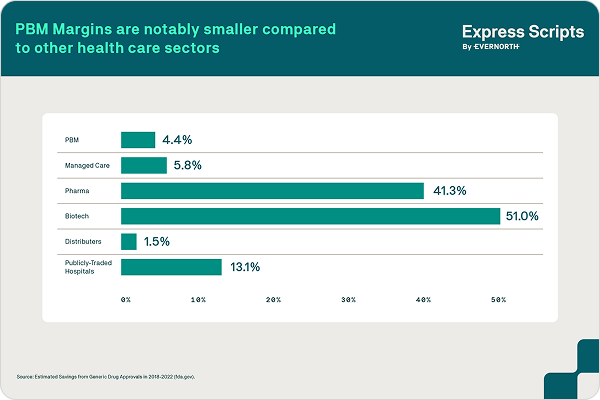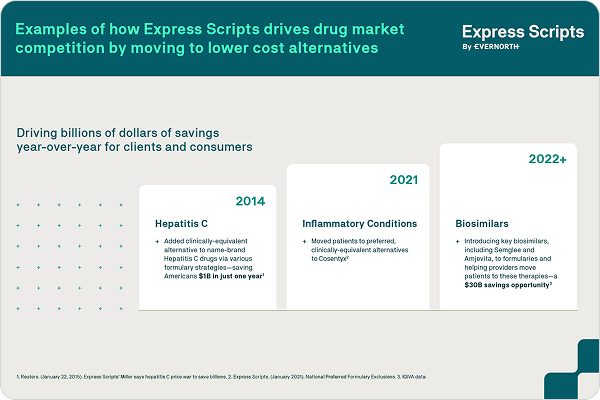The truth about high prices
PBMs are not the cause of increasing drug costs.
Nearly every American has been affected by high prescription drug prices
This starts with pharmaceutical companies, which have steadily raised prices. Some patients must weigh the costs of needed medications against the costs of other essentials. And employers, government agencies and other organizations that provide health benefits face higher costs for prescription drug benefit plans.
Over the years, drug manufacturers have increased list prices. The PBM industry is innovating solutions to lower the cost of their drugs through rebates and other programs—providing clients with options to finance pharmacy benefits and ensuring consumers can access affordable medications and often life-sustaining or life-saving therapies.

Studies and analyses clearly show drug price increases are not caused by PBMs like Express Scripts.
One analysis found that in 2023, pharmaceutical companies launched new U.S. medicines at list prices 35% higher than in 2022. The median annual treatment cost of new medicines launched in 2023 exceeded $300,000, with pharma raising the price of over 60% of branded drugs.1
Driving lower prescription costs and coordinating care programs
PBMs provide benefits at a cost that is significantly lower than the value they bring to the health care system.
The average pre-tax adjusted operating margin of PBMs is 4.4%—well below pharmaceutical manufacturers, below many other health care subsectors, and below the 5-year average net profit margin for the S&P 500 of 11.4%.2

Drug manufacturers are focused on monopolizing the system, reducing competition and keeping their prices high
Drug manufacturers actively block competition through the U.S. patent system that would bring to market more affordable alternatives, like generics and biosimilars. A comprehensive study has found that nearly 80 of the 100 top-selling drugs extended their monopoly periods with maneuvers such as patent thickets, when manufacturers amass dozens of patents on a single drug.3 This leads to higher prices.
They also often make small tweaks to release their drugs—allowing them to extend their monopoly, and in some cases, relaunch the same drug at significantly higher prices to the market.
PBMs create a more competitive drug marketplace
Express Scripts champions greater uptake of low-cost generics and biosimilars to promote competition to name-brand drugs and negotiates discounts with drug manufacturers. Our economic interests are aligned with the thousands of businesses, government organizations, and health plans that choose our services.
PBMs are also leading the way toward a system that pays for outcomes and clinical value—constantly analyzing pharmacy data to hold drug companies accountable for expected health outcomes from medicines and using insights to inform affordability strategies as well as adherence support needs.
2022+: IQIVA data

Sources
- The use of medicines in the U.S. 2024: Usage and spending trends and outlook to 2028. IQVIA. May 7, 2024.
- FactSet, “S&P 500 Reporting a Lower Net Profit Margin for 6th Straight Quarter,” January 23, 2023
- Robin Feldman, May your drug price be evergreen, Journal of Law and the Biosciences, Volume 5, Issue 3, December 2018, Pages 590–647